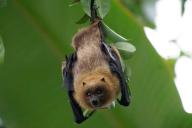Gardening can be made eco-friendly by adopting practices that prioritize environmental sustainability, conservation, and minimizing harm to ecosystems.
By incorporating eco-friendly gardening principles, individuals can contribute to the health of the planet and create a harmonious balance between their gardening activities and the natural world.
Here are key factors that make gardening eco-friendly.
Native Plants
Choosing native plants that naturally thrive in your region helps support local ecosystems.
Native plants are adapted to the local climate and require less water and maintenance, reducing the need for chemical inputs.

Biodiversity
Creating diverse plant communities in your garden fosters a healthy ecosystem.
A variety of plant species attracts different pollinators, beneficial insects, and wildlife, promoting ecological balance.
Organic Practices
Avoiding synthetic pesticides and chemical fertilizers helps prevent harm to beneficial insects, soil organisms, and waterways.
Instead, opt for organic methods like composting, natural pest control, and crop rotation.
Water Conservation
Implement water-efficient techniques such as drip irrigation, rainwater harvesting, and mulching.
These practices minimize water wastage and ensure that plants receive adequate hydration.
Composting
Composting kitchen scraps and garden waste reduces landfill waste and enriches soil with nutrient-rich organic matter, improving soil structure and fertility.
Wildlife Habitat
Designing garden spaces that provide food, water, and shelter for local wildlife, such as birds and insects, contributes to biodiversity and ecosystem health.
Minimizing Lawn Areas
Reducing the size of traditional lawns by incorporating native plantings or creating functional spaces like vegetable gardens reduces the need for excessive water and chemical inputs.









